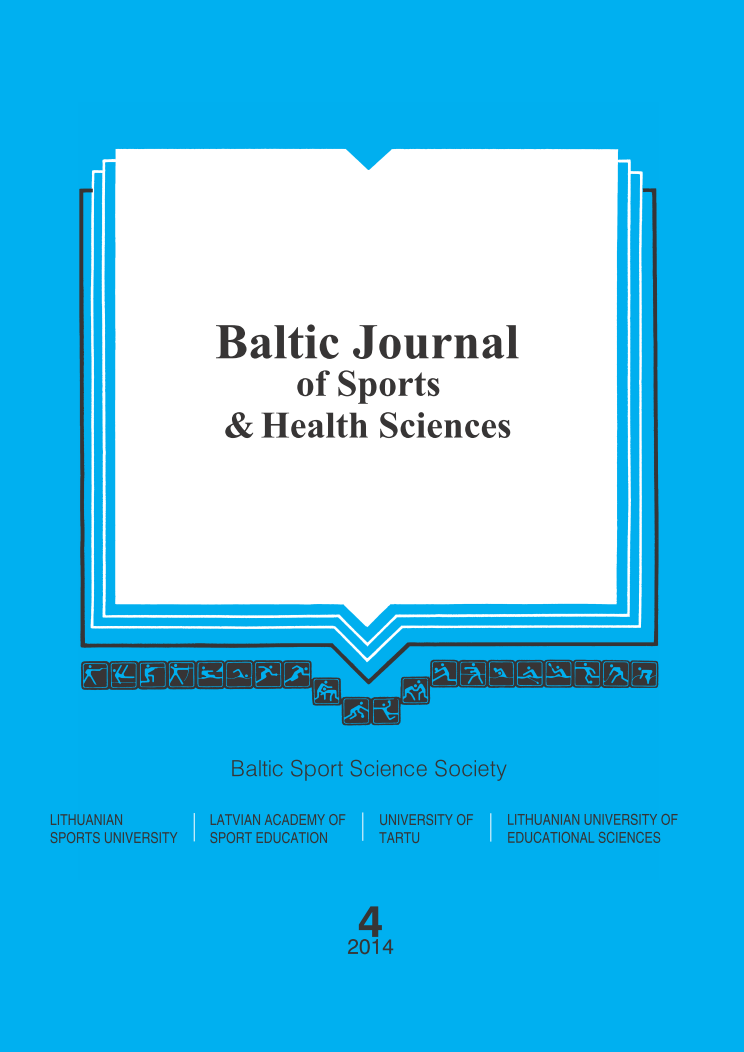Pre-Training Hydration Status of Well- Trained Soccer Players in Moderate Temperature Autumn and Cool Winter
Abstract
Background. Pre-training hydration status is considered a factor influencing efficacy of training. Research
literature does not contain data regarding the potential impact of natural alternation of seasons on pre-training
hydration status in athletes. The purpose of this study was to assess and compare pre-training hydration status in
well-trained male soccer (football) players in moderate temperate autumn and cold winter.
Methods. Research participants were 57 male soccer players from two Latvian First League teams, who were
studied prior to their ordinary training session. Participants provided a midstream urine sample for analysis of urine
specific gravity (USG), and their body mass (kg), body fat percentage and total body water percentage were measured.
Results. Pre-training hydration status did not differ in moderate temperature autumn (mean USG 1.020 ± 0.010;
mean total body water 64.2 ± 2.9%) in cold winter (mean USG 1.020 ± 0.008; mean total body water 64.8 ± 2.7%;
for both parameters p > .05). Prevalence of hypohydration and serious hypohydration (defined as USG 1.021 – 1.030
and USG > 1.030, respectively) was similar in moderate temperate autumn (47.4%) and cold winter (60%), (χ 2 =
1.50; p > .05). Significant correlation between the within-subject USG values measured in moderate temperate and
cold environment was observed (r = .60, p = .009).
Conclusion. In well-trained soccer players pre-training hydration status does not differ in moderate temperature
autumn and cold winter. Individual-related factors such as nutritional behaviour (including pattern of voluntary fluid
intake) may have stronger impact on hydration status than environment-related factors like natural alternation of seasons.
Keywords: hydration status, football, environmental temperature, autumn, winter.






